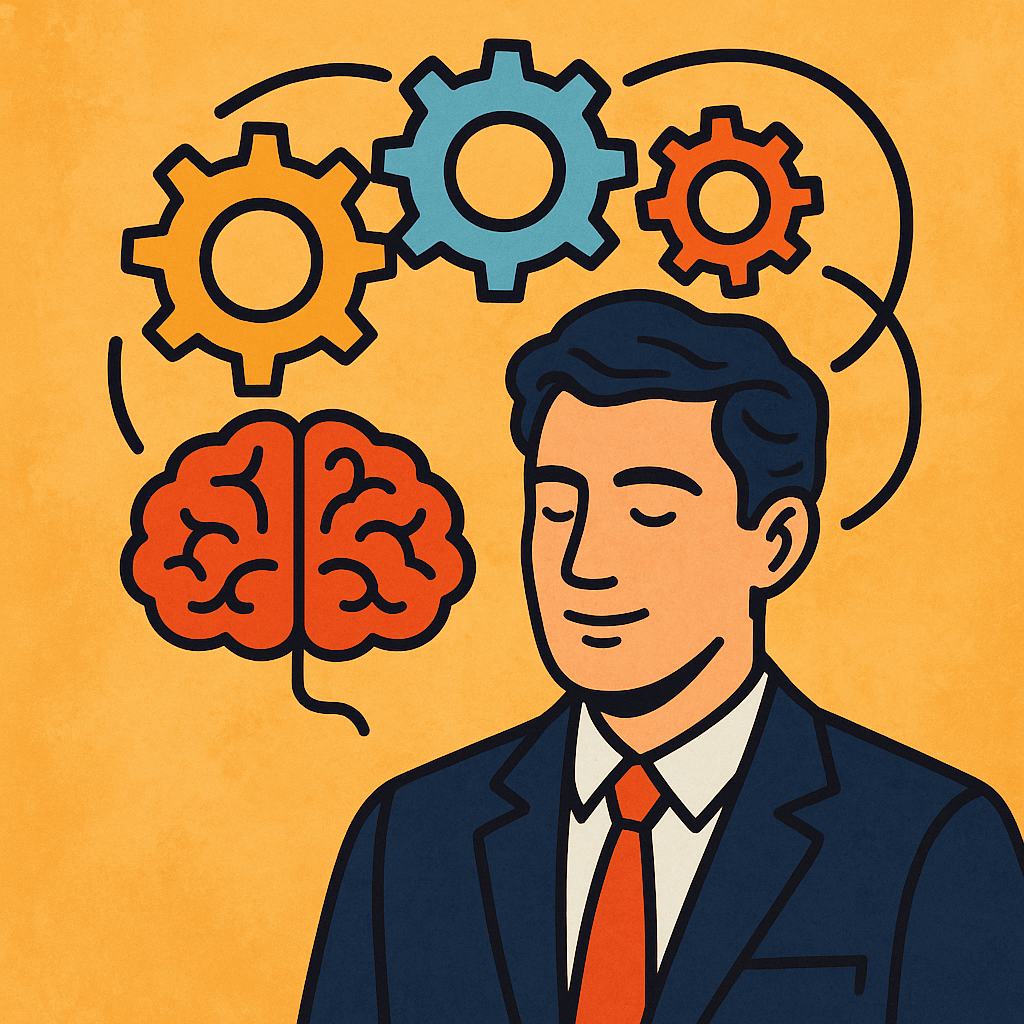Emotional agility in leadership is a competitive advantage. As organizations battle increasing complexity, hybrid workplaces, and economic uncertainty, emotionally agile leaders are rising to the top. Emotional agility in leadership is no longer optional—it’s the defining trait of resilient, successful executives.

What Is Emotional Agility?
Coined by Harvard psychologist Susan David, emotional agility is the ability to navigate one’s inner world—thoughts, emotions, and self-stories—with curiosity, courage, and compassion (David and Congleton 2013). Unlike emotional intelligence, which emphasizes recognition and regulation, emotional agility focuses on how leaders use emotions to align actions with their core values, especially during high-stakes challenges.
Emotionally agile leaders don’t suppress emotions—they acknowledge them without being controlled by them. They pause, reflect, and choose purposeful actions. This enables them to lead authentically, communicate clearly, and respond rather than react.
Why Emotional Agility Matters in 2025
1. Leadership Under Pressure
Today’s leaders operate in high-stress environments. The rapid pace of digital transformation, workforce burnout, and societal unrest means leaders face constant emotional triggers. Without emotional agility, these pressures can lead to impulsive decisions, communication breakdowns, and fractured teams.
A 2024 Deloitte survey found that 78% of employees feel emotionally unsupported at work, directly affecting retention and productivity (Deloitte Insights 2024). Leaders who are emotionally agile can foster trust, promote mental well-being, and lead with clarity even under duress.
2. The Remote and Hybrid Work Revolution
Remote work has changed how teams interact. Leaders can no longer rely solely on in-person cues to assess morale. Emotional agility equips leaders to listen actively, express empathy through digital platforms, and model vulnerability—critical in virtual leadership.
Research from McKinsey (2024) highlights that emotionally agile leaders are 2.3x more likely to retain top talent in hybrid settings, thanks to their ability to foster psychological safety and build inclusive environments (McKinsey & Company 2024).
3. Authenticity and Trust
Modern teams demand authenticity. Employees are less tolerant of performative leadership and more inclined to trust leaders who are transparent about their own struggles and emotions.
Emotional agility allows leaders to be authentic without oversharing. They don’t bottle emotions, nor do they burden their teams. Instead, they engage emotions productively, reinforcing trust and approachability.
Emotional Agility in Action: Leadership Case Studies
Volkswagen Group España
Ariadna Masip Pablo, a logistics training manager, embraced coaching to better manage team dynamics. Her work focused on improving emotional agility. The result? Increased empathy, stronger communication, and an uplift in team performance. Emotional agility helped her shift from reactive to intentional leadership, according to a Financial Times case study (Financial Times 2024).
Ministry of Culture, Saudi Arabia
General Manager Amal Al-Abduljabbar implemented executive coaching that prioritized emotional agility. Her leadership transformation emphasized empathy, patience, and communication. Not only did workplace performance improve, but her personal relationships also benefited. This shows that emotionally agile leadership transcends office walls (Financial Times 2024).
The Neuroscience Behind Emotional Agility
Emotional agility is not just psychology—it’s neuroscience. When we react emotionally, our amygdala (the brain’s fear center) often hijacks rational thinking. Emotional agility rewires this response.
Practices like mindfulness activate the prefrontal cortex—responsible for logical decision-making—allowing leaders to respond thoughtfully. A University of Toronto study confirmed that emotional agility reduces cortisol levels, improves focus, and enhances decision quality (Watkins et al. 2023).
How to Build Emotional Agility
1. Name It to Tame It
Labeling emotions helps detach from them. Instead of “I’m angry,” try “I’m noticing feelings of frustration.” This reduces emotional intensity and brings clarity.
2. Pause Before Reacting
Insert a pause between emotion and action. Even a few seconds of deep breathing can prevent impulsive replies and foster better decision-making.
3. Practice Mindfulness
Mindfulness strengthens emotional regulation. Even five minutes a day can recalibrate your emotional state, according to a 2023 Harvard Health study (Harvard Health Publishing 2023).
4. Reframe the Narrative
Challenge self-limiting beliefs. For example, reframe “I always fail under pressure” to “This is hard, but I’ve overcome challenges before.”
5. Align With Core Values
Use emotions as a compass. Ask: “What do I value here?” Let your actions reflect integrity, even when under emotional strain.
Emotional Agility in Executive Coaching
Executive coaching in 2025 has evolved. Emotional agility is now a core pillar. Coaches help leaders become observers of their thoughts rather than reactors.
Top coaching programs like the Co-Active Training Institute and the Institute for Professional Excellence in Coaching (iPEC) now include emotional agility modules. This shift reflects its critical role in executive growth and transformation.
Emotional Agility and Team Performance
Emotionally agile leaders shape emotionally intelligent teams. They:
- Model healthy emotional expression.
- Provide space for others to process.
- Set a tone of respect and psychological safety.
A Gallup meta-analysis showed teams led by emotionally agile managers had 27% higher profitability and 21% greater productivity (Gallup 2023). The link is clear: emotional agility isn’t soft—it’s strategic.
Final Thoughts: Why It’s a Must-Have in 2025
In an era of uncertainty, emotional agility is no longer a “nice-to-have.” It is essential for:
- Building trust.
- Leading remote teams.
- Navigating crisis.
- Inspiring innovation.
Leaders who master emotional agility lead from within—they are resilient, authentic, and future-ready.
References
- David, S. and Congleton, C. (2013) ‘Emotional Agility’, Harvard Business Review. Available at: https://hbr.org/2013/11/emotional-agility (Accessed: 2 June 2025).
- McKinsey & Company. (2024) The State of Hybrid Leadership. Available at: https://www.mckinsey.com/business-functions/people-and-organizational-performance/our-insights/the-state-of-hybrid-leadership (Accessed: 2 June 2025).
- Financial Times. (2024) ‘Coaching for transformation: How emotional agility is shaping leaders’. Available at: https://www.ft.com/content/7070f506-b42f-4a1b-9ff4-18c5cf2f7f8a (Accessed: 2 June 2025).
- Deloitte Insights. (2024) Workforce Trends Survey. Available at: https://www2.deloitte.com/us/en/insights.html (Accessed: 2 June 2025).
- Watkins, J., Gupta, N. and Ma, X. (2023) ‘The role of mindfulness in emotional regulation’, Journal of Neuroscience & Behavior, 18(2), pp. 145–158.
- Harvard Health Publishing. (2023) Benefits of Mindfulness. Available at: https://www.health.harvard.edu/mind-and-mood/mindfulness-meditation-what-it-is-and-how-to-practice (Accessed: 2 June 2025).
- Gallup. (2023) State of the Global Workplace Report. Available at: https://www.gallup.com/workplace/349484/state-of-the-global-workplace.aspx (Accessed: 2 June 2025).






